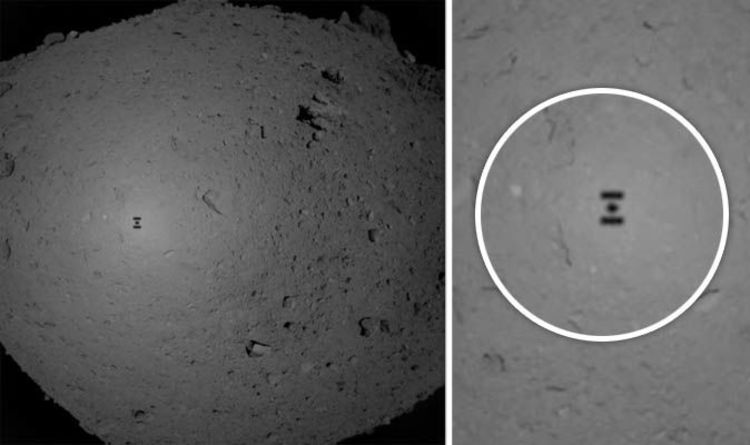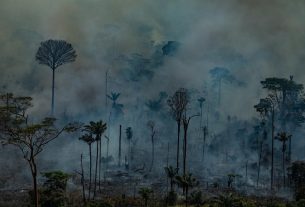Placed around the asteroid Ryugu on June 27, 2018, the Japanese probe Hayabusa2 had as main objective to sample the surface of the object. The task is not simple: asteroids have weak gravitational fields and chaotic surfaces indeed. The challenge is to be able to land safely while avoiding bouncing.
The probe first landed successfully on the asteroid last February in order to collect first samples of dust. A tantalum ball was fired on the surface, forming a small crater. The probe is then reassembled to place itself in orbit again. This Thursday, a second maneuver should be attempted in order to sample the material that was expelled during this first “shot.”
A risky mission
At least that’s what JAXA (Japan Aerospace Exploration Agency) just said. A photo of the crater taken by Hayabusa’s camera2 shows that some parts of the asteroid’s surface are covered with materials “obviously different” from the rest of the surface. For this operation, the probe should normally land briefly about twenty meters from the center of the crater.
“This is our second touch, but the maneuver still remains risky,” said Yuichi Tsuda, Hayabusa Project Manager2. The whole team will do their best so that we can carry out the operation. ” In addition to collecting new samples, the goal will also be to ensure that materials already collected during the first landing are not lost.
Sample return expected in 2020
If all goes according to plan, future analyses of these immaculate materials (never exposed) will then allow us to learn more about the youth of our solar system, about 4.6 billion years ago. “I am really looking forward to analyzing these materials,” said Makoto Yoshikawa, one of the key players in the mission. The return of samples, it is planned for next year.
It is also recalled that NASA is preparing for a similar mission. The OSIRIS-REX probe, orbiting the asteroid Bennu, should soon blow liquid nitrogen on the surface of the object in order to release dust. Once aspirated, these samples will be sealed before a return to Earth scheduled for 2023.




